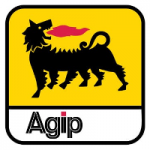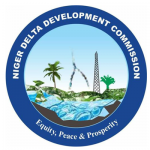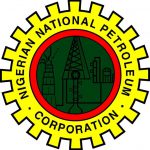
Common calibration errors are more than just technical mishaps—they can lead to inaccurate readings, production delays, safety risks, and compliance failures. In industries where precision equals performance—like oil and gas, manufacturing, pharmaceuticals, and power generation—a small calibration mistake can translate into big operational problems.
At Aecems Services Limited, we’ve seen firsthand how these errors creep into operations and what it takes to eliminate them. In this guide, we reveal the most common calibration errors, their root causes, and—most importantly—how to avoid them through expert procedures and reliable calibration services.
1. Using Outdated or Inaccurate Calibration Standards
One of the most common calibration errors is using standards that are out of date, uncertified, or inaccurate. Many technicians unknowingly calibrate instruments with reference tools that themselves haven’t been calibrated properly.
How to Avoid This Calibration Error:
- Verify that all reference standards are calibrated, certified, and traceable to national or international benchmarks.
- Implement a regular calibration schedule for all reference devices.
- Use standards with a Test Accuracy Ratio (TAR) of at least 4:1 for reliable results.
- Partner with an accredited provider that offers end-to-end calibration services to eliminate guesswork.
2. Ignoring Environmental Conditions
Calibration accuracy can be heavily influenced by environmental variables such as temperature, humidity, and even electromagnetic interference. Neglecting these factors is another common calibration mistake.
How to Avoid This Calibration Error:
- Calibrate in a controlled environment with stable temperature and humidity.
- Use environmental monitoring tools to document conditions during calibration.
- Let all instruments stabilize at room temperature before calibration.
- Leverage professional calibration services equipped with environmental controls and diagnostic tools.
3. Skipping Zeroing or Baseline Reset
Skipping the zeroing step is surprisingly frequent. Instruments may carry residual readings or drift over time, resulting in calibration inaccuracies if not properly reset.
How to Avoid This Calibration Error:
- Include zeroing or baseline reset as a non-negotiable part of your procedure.
- Ensure no external pressure or load is applied when zeroing.
- Use automated systems that prompt technicians to perform baseline checks.
- Consider using outsourced calibration services with zeroing protocols embedded in the workflow.
4. Improper Equipment Setup or Connection
From wrong ports to loose wires, poor setup is a textbook calibration error. It’s not just about bad readings—it can damage equipment and invalidate the entire process.
How to Avoid This Calibration Error:
- Double-check the user manual for setup instructions.
- Use clearly labelled calibration leads and dedicated ports.
- Train technicians to follow a pre-calibration checklist for setup verification.
- Utilize professional calibration services where trained personnel ensure proper setup from the start.
5. Skipping Equipment Warm-Up Time
Many electronic instruments need a warm-up period to stabilize. Jumping into calibration too quickly leads to skewed results and potential rework.
How to Avoid This Calibration Error:
- Follow manufacturer recommendations for warm-up time—typically 15–30 minutes.
- Schedule time for warm-up into your calibration routines.
- Power on devices early to ensure readiness.
- Opt for full-service calibration providers that build warm-up periods into standard operating procedures.
6. Miscalculating Tolerances and Measurement Uncertainty
Some technicians assume tolerance levels or don’t fully understand measurement uncertainty. This results in calibration errors that affect compliance and reporting.
How to Avoid This Calibration Error:
- Define tolerance limits and acceptable uncertainty ranges before starting.
- Use software or templates to maintain calculation accuracy.
- Train staff on uncertainty interpretation and its impact on calibration results.
- Choose calibration services that include uncertainty analysis as part of the documentation.
7. Lack of Proper Documentation
Even if your calibration was flawless, failing to document the process correctly renders it invalid for compliance or audits. This is one of the most overlooked calibration errors.
How to Avoid This Calibration Error:
- Use standardized forms and digital systems to record data.
- Log environmental conditions, technician names, instrument serial numbers, and test results.
- Store records securely in digital archives for traceability and audits.
- Work with calibration service providers that deliver full digital reports and traceable records.
Bonus: Poor Technician Training
While not a technical step, untrained or undertrained technicians are behind many calibration errors. Even the best tools and processes fail if people don’t know how to use them.
How to Avoid This Calibration Error:
- Offer continuous training and refresher sessions.
- Encourage peer mentoring and on-the-job learning.
- Perform regular audits and performance reviews.
- Use certified calibration services that employ trained and accredited technicians.
Why Accuracy Matters: Aecems Sets the Standard
At Aecems Services Limited, we believe calibration is not just a technical task—it’s a discipline rooted in precision, compliance, and continuous improvement. Our ISO-certified calibration services help organizations across Nigeria and beyond avoid these common calibration errors through:
- Expert technicians
- Certified equipment
- Digital reporting systems
- On-site and in-lab calibration options
- Industry-tailored solutions
Whether you’re working in a lab, refinery, factory, or food facility—we ensure your instruments are reliable, traceable, and compliant.
Let’s Help You Get It Right
Avoiding common calibration errors starts with the right partner. Get in touch with Aecems Services Limited for a custom calibration plan designed to keep your operations safe, compliant, and running smoothly.
Contact us today to get started.







